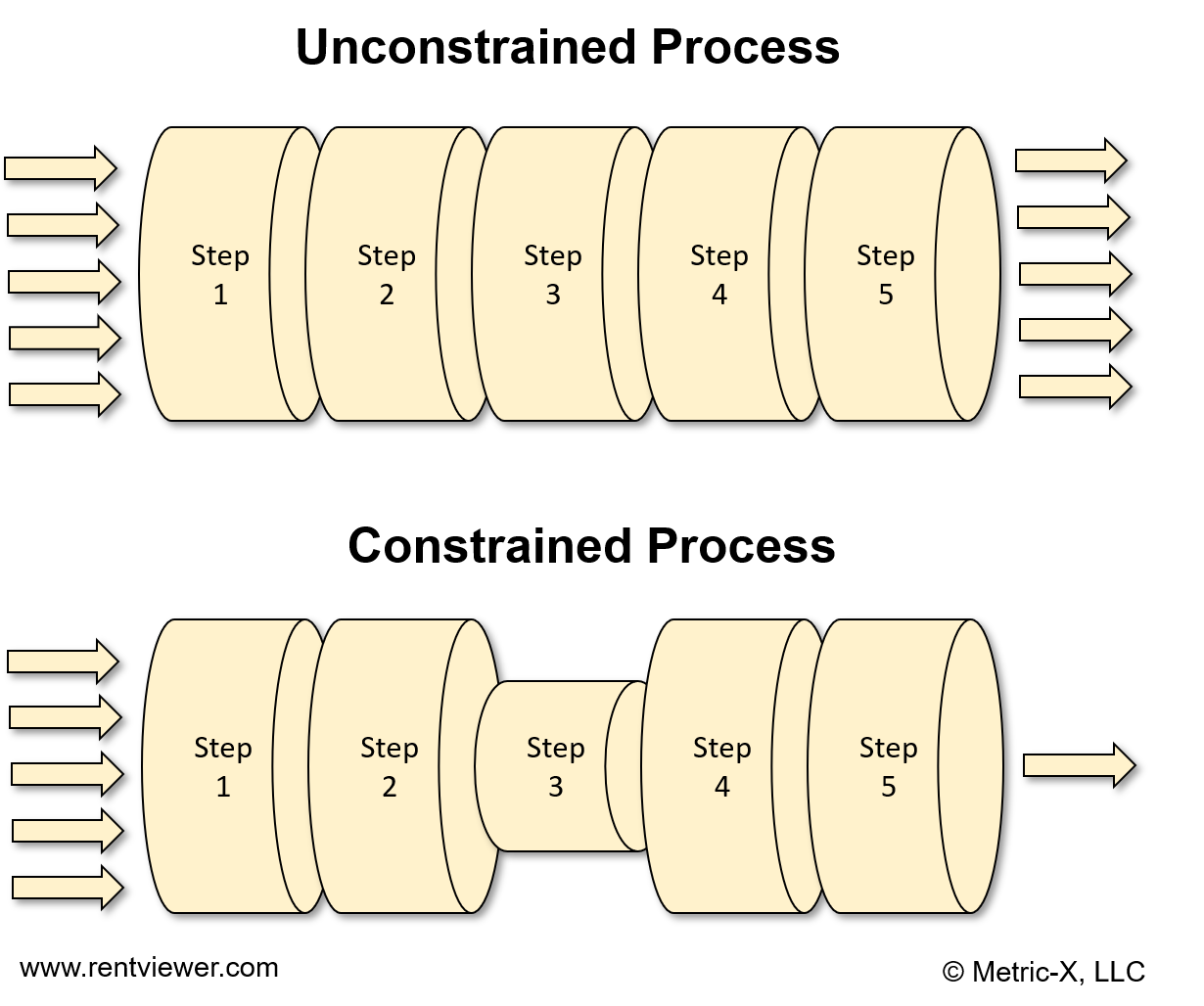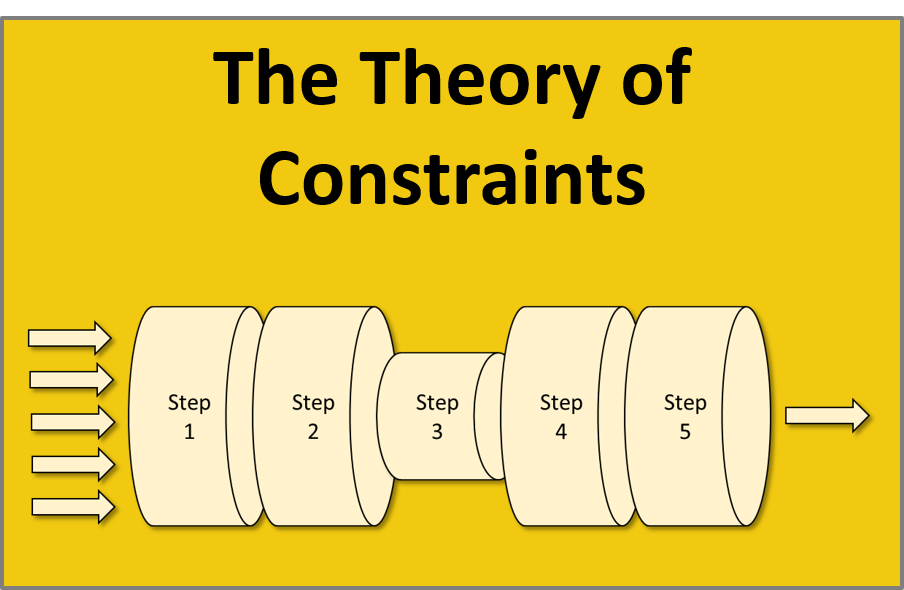The entire RentViewer process improvement methodology is based on the Theory of Constraints. For us, it is an important concept for helping our clients decide where to focus time, energy and money. And what to measure.
In a nutshell, the Theory of Constraints says that in every system there is at least one bottleneck, or constraint. And the overall output of the system will be limited by the output of the constraint.
In other words, a chain is only as strong as its weakest link.
Or, cars on a single lane road can only move as fast as the slowest car.
Or, the tighter you squeeze on a water hose, the lesser the water that will come out at the end.
Why is the Theory of Constraints Relevant to Property Management?
If you think of your property management business as a series of interconnected processes, the analogy of a chain or highway will make sense.
Think of the following series of steps:
| Step | Capability |
| 1. Generate qualified leads | 100 leads per day |
| 2. Contact the leads | 100 contacts per day |
| 3. Schedule appointments | 80 appointments per day |
| 4. Conduct showings | 10 showings per day |
| 5. Process lease applications | 80 applications per day |
| 6. Sign leases | 50 lease signings per day |
How to Find the Constraint in Your Property Management Processes
Suppose you are generating lots of leads, setting lots of appointments, and can process lots of lease applications, but don’t have the adequate staff and systems capability to conduct showings. In this case, the bottleneck is in showings. That’s your constraint.
If you have the capacity to process 80 lease applications per day, but can do only 10 showings per day, your application processing capacity will remain under-utilized. You won’t be able to sign as many leases as you are capable of because you can’t show enough units.
What to do Once a Constraint is Identified
The Theory of Constraints say you should invest in increasing the capacity of the constraint before investing in other processes. So, in this case, our focus should be on being able to conduct more showings per day. Possible actions could be:
- Reassigning team members
- Using technology for showings
- Skipping the showing step (assuming some prospects will agree)
Upstream and Downstream Waste
The Theory of Constraint uses the concept of “waste” to highlight capacity that is underutilized. You may have invested heavily in lead generation and appointment setting, but since you cannot conduct as many showings as there is demand for, some of your investment is going to waste. Similarly, your capacity to process applications and sign leases is also being underutilized. That, too, is being “wasted”. These will stop going to waste once you can do 80 or more showings per day.

In the above diagram, the “constrained process” will not produce the same output as the unconstrained process. Its output will be limited to the output of Step 3.


